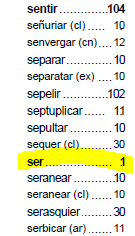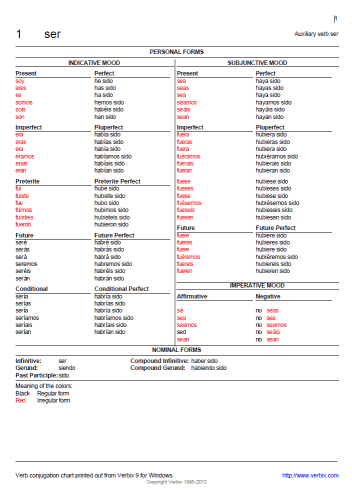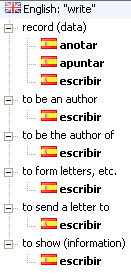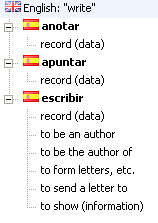There’s an “Easter Egg” in Verbix 9 for Windows.
An Easter Egg in software is a hidden feature that is not documented. In Verbix 9 the hidden feature creates a Spanish Verb Conjugation book and saves it as PDF. This article describes how to use the book. As a matter of fact, this book is used exactly in the same way as any verb conjugation book that you can buy in a bookstore!
 1. First look up the verb from the verb index.
1. First look up the verb from the verb index.
As in many verb conjugation books, the Spanish Verb Conjugation book created in Verbix for Windows 9.0 has an index of verbs.
Let’s find for example ‘ser’ (English ‘to be’).
2. Check the verb model that the verb refers to.
 In the index the verb ‘ser’ is marked with number 1. This number refers to the verb conjugation table 1. Now that we browse the book to verb conjugation table 1, we find the verb ser conjugated in all tenses.
In the index the verb ‘ser’ is marked with number 1. This number refers to the verb conjugation table 1. Now that we browse the book to verb conjugation table 1, we find the verb ser conjugated in all tenses.
As in Verbix, irregular forms are displayed in red and regular forms are in black.
About the Spanish Verb Conjugation Book
The book has an index of 38,395 verbs.
The book comprises 231 pages.
Color coding clearly shows additional information of every verb form:
- regular forms in black
- irregular forms in red
- forms that have changes in spelling due to orthographic rules are in blue
- archaic forms are in purple
- non-used (hypothetical) forms are in grey
The book is free!






